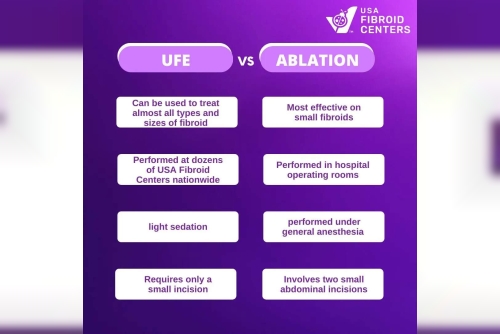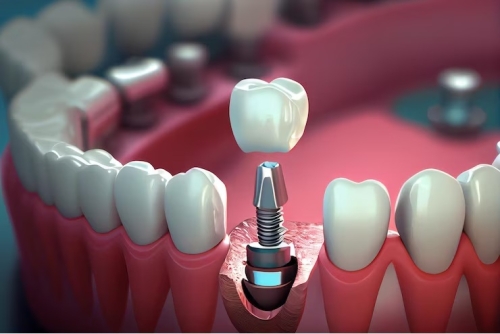Fibroid ablation has emerged as a transformative option for women seeking a minimally invasive solution to manage uterine fibroids. This advanced procedure offers a safer and effective alternative to traditional surgeries, ensuring quicker recovery and better quality of life. This guide delves into everything you need to know about fibroid ablation, its benefits, the procedure, and what to expect post-treatment.
Why Fibroid ablation?
Fibroid ablation is a cutting-edge, minimally invasive procedure designed to shrink or destroy fibroids. It works by targeting fibroid tissue using heat, cold, or ultrasound energy. This targeted approach spares healthy uterine tissue, making it an excellent option for women who want to preserve their uterus.
Benefits of Fibroid Ablation
Non-Invasive Treatment: Unlike traditional surgeries, fibroid ablation is minimally invasive, meaning fewer risks and a faster recovery.
Preservation of the Uterus: This method does not involve removing the uterus, making it a viable option for women considering future pregnancies.
Shorter Recovery Time: Most patients can return to normal activities within days, unlike the weeks required for surgical recovery.
Effective Symptom Relief: The procedure effectively reduces heavy menstrual bleeding, pelvic pain, and other symptoms caused by fibroids.
Outpatient Procedure: Fibroid ablation is typically performed on an outpatient basis, eliminating the need for an extended hospital stay.
The Procedure: How Fibroid Ablation Works
Fibroid ablation uses advanced technologies to treat fibroids without the need for invasive surgery:
Heat Ablation: Techniques such as radiofrequency energy or thermal balloon ablation apply heat to destroy fibroid tissue.
Cryoablation: This method uses extreme cold to freeze and eliminate fibroids.
Focused Ultrasound Ablation: High-intensity ultrasound waves are used to target and shrink fibroids.
The procedure is typically guided by imaging technologies, such as ultrasound or MRI, to ensure precision and safety.
Who Is a Candidate for Fibroid Ablation?
Fibroid ablation is suitable for women who:
Experience significant symptoms such as heavy menstrual bleeding, pelvic pain, or bloating.
Are looking for a minimally invasive treatment option.
Wish to avoid hysterectomy or other major surgeries.
Are not planning to conceive in the future (pregnancy post-ablation is possible but requires careful consideration).
It’s essential to consult a fibroid specialist to determine if this procedure aligns with your health needs and goals.
What to Expect During the Procedure
Pre-Procedure Preparation: You may be asked to fast and avoid certain medications before the procedure. Imaging tests may also be conducted to locate and assess fibroids.
The Procedure: Fibroid ablation is performed under local anesthesia or sedation. A small incision may be made, or energy is applied externally in some cases.
Post-Procedure Care: Patients are monitored briefly before being discharged. Mild cramping or discomfort is common and can be managed with over-the-counter pain relievers.
Recovery and Results
One of the key advantages of fibroid ablation is its quick recovery time. Most women resume normal activities within a few days. Symptoms such as heavy bleeding and pain typically improve within a few weeks. Regular follow-ups with your doctor ensure optimal results and monitor long-term outcomes.
Fibroid Ablation vs. Traditional Surgery
Fibroid Ablation
Minimally invasive
Short recovery period
Preserves the uterus
Traditional Surgery (e.g., Hysterectomy)
Invasive
Longer recovery time
Uterus removal
For many women, fibroid ablation offers the perfect balance of effectiveness and convenience.
Why Choose Fibroid Ablation at USA Fibroid Centers?
At USA Fibroid Centers, we specialize in innovative fibroid treatments, including ablation. Our skilled physicians ensure personalized care in a comfortable and compassionate setting. With state-of-the-art technology and a patient-centered approach, we help women achieve symptom relief and regain control over their lives.
FAQs About Fibroid Ablation
Q: Is fibroid ablation painful?
A: The procedure is generally well-tolerated, with most women experiencing only mild discomfort.
Q: How long does the procedure take?
A: The process typically lasts 30-90 minutes, depending on the method used.
Q: Are there risks associated with fibroid ablation?
A: Like any medical procedure, there are some risks, but they are minimal compared to traditional surgeries.
Q: Can I get pregnant after fibroid ablation?
A: Pregnancy may still be possible, but it’s essential to discuss this with your doctor before the procedure.
Fibroid ablation is an empowering solution for women seeking effective, non-surgical relief from fibroid symptoms. If you’re considering fibroid ablation, the experts at USA Fibroid Centers are here to guide you every step of the way. Reclaim your health and vitality today!












